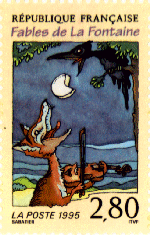




I'm home now, in California, but I'm still in Paris, at least mentally. I'm going to continue this blog for awhile, working my way through the many thoughts and 1000+ photos, at least until I've repatriated fully into the USA. Lately I've been thinking quite a bit about the village of Bercy and how it represents so many French ideas. I've already included pictures of the Passarelle bridge linking Bercy to the hideous Mitterand library district, as well as pictures of the Frank Gehry building that now houses cinema expositions. Bercy, until the middle of the 19th century, was outside of Paris, and up until the 1970s it was best known as a wine processing district. To me it really helps illustrate how Paris is a series of villages, loosely held together. In France, deconstruction actually means something, unlike here in America, where it has become a pop cultural phrase denoting anything that is confusing or postmodernish. In French urban planning, though, deconstruction is an actual strategy. Urban spaces show the inherent contradictions that compose a city like Paris. Take, for example, the "village" of Bercy. The pictures today show how they have maintained public gardens and wooden bridges, amidst glass structures and Frank Gehry's architecture. Over the village park looms the Palais Omnisport, a large glass and metal stadium wrapped in vertical grass lawn [and note the homage to I.M. Pei's Louvre pyramid, which in itself is an echo of Napoleon's 1798 Egyptian campaign). Like all of Paris, Bercy is a palimpsest, where past and present coexist--but they coexist because of public policy, and this coexistence strains coherence. I love this tension throughout the whole city. The Champs Elysee still has artifacts of its pre-revolution status as the place where aristocrats escaped the city, and the glory of the middle of last century gives way to modernization, as you can buy your Hermes scarf and then walk into a McDonald's for a Big Mac. Haussman's grand boulevards codified the bourgeoisie into the city, but it also created pockets of poverty which, over time, either became worse (the banlieues) or became priveleged for not being bourgeouisie (Montmartre, the Latin Quarter, etc.). Ok, too much rambling. By the way, the large taco seller statue was part of the Dennis Hopper exhibit in the cinema exposition hall located in the Gehry building.

















































